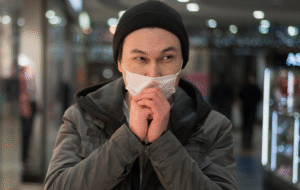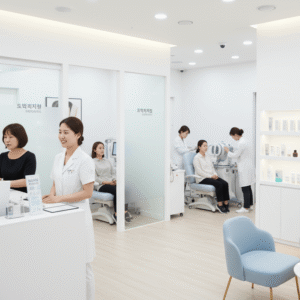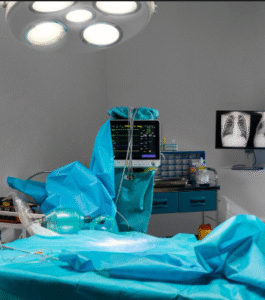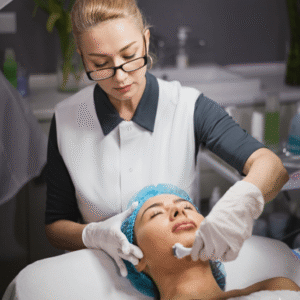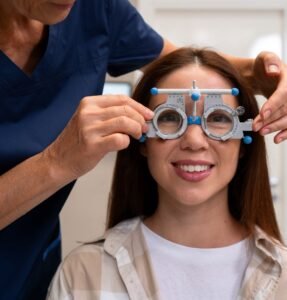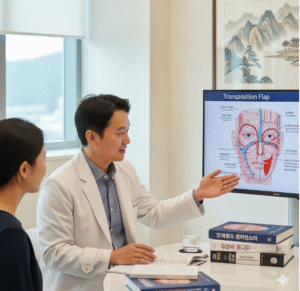Overview
Otoplasty is a cosmetic surgical procedure designed to reshape, resize, or reposition the ears for improved appearance and symmetry. It is commonly performed to correct prominent ears, asymmetry, or congenital deformities and can be done for both children and adults.
South Korea is renowned for advanced aesthetic surgery, and otoplasty is frequently performed in specialized clinics using minimally invasive techniques, precise cartilage reshaping, and meticulous post-operative care to ensure natural-looking results.
What is Otoplasty?
Otoplasty involves surgical modification of the ear cartilage and skin to achieve a desired shape or position. Common techniques include:
✔ Ear pinning: Reduces prominence by repositioning the ear closer to the head.
➔ Cartilage reshaping: Adjusts size, folds, or contours for better symmetry.
● Reconstructive otoplasty: Corrects congenital deformities such as microtia or lop ear.
★ Combination procedures: Blends cosmetic and reconstructive approaches for optimal outcomes.
Otoplasty can be unilateral (one ear) or bilateral (both ears) depending on the patient’s needs.
What are the Benefits?
Otoplasty offers both cosmetic and psychological benefits:
✔ Improves ear appearance and symmetry
➔ Enhances facial balance and aesthetics
● Boosts self-confidence, especially in children or adolescents
★ Corrects congenital or trauma-related deformities
➤ Permanent results with proper surgical technique
Procedure Details
1) How should I prepare for Otoplasty?
Preparation is essential for optimal results:
✔ Medical evaluation: Assess ear anatomy, skin, and cartilage flexibility.
➔ Medication review: Blood thinners may need to be paused.
● Smoking cessation: Recommended to improve healing.
★ Patient counseling: Discuss goals, expected outcomes, risks, and recovery.
➤ Pre-surgical planning: Photos and measurements taken for surgical reference.
2) What happens during the procedure Otoplasty?
Otoplasty is performed under local or general anesthesia, depending on age and complexity:
✔ Incision: Typically behind the ear to minimize visible scarring.
➔ Cartilage reshaping or pinning: Surgeon adjusts cartilage to correct prominence or deformity.
● Sutures placement: Permanent or absorbable stitches maintain the ear’s new shape.
★ Closure: Incisions are sutured, and protective dressings applied.
➤ Duration: Usually 1–3 hours depending on technique and whether one or both ears are operated on.
Korean clinics frequently use minimally invasive techniques and fine suturing to ensure natural-looking, symmetrical results.
3) What happens after Otoplasty?
Recovery focuses on healing and protecting the new ear shape:
✔ Initial recovery: Head dressing worn for several days to support healing.
➔ Pain management: Mild discomfort controlled with medications.
● Activity restrictions: Avoid strenuous exercise, contact sports, or sleeping on the side of the operated ear for 2–4 weeks.
★ Follow-up care: Stitches may be removed in 1–2 weeks, and regular check-ups monitor healing.
➤ Final results: Swelling and redness subside over several weeks, revealing the ear’s permanent shape.
Risks / Benefits
Possible Risks:
✔ Infection at incision site
➔ Minor bleeding or hematoma
● Asymmetry or slight shape irregularities
★ Temporary numbness or skin sensitivity
➤ Scarring (usually hidden behind the ear)
Major Benefits:
✔ Corrects ear prominence and deformities
➔ Improves facial aesthetics and symmetry
● Boosts self-esteem and confidence
★ Provides permanent, natural-looking results
➤ Minimally invasive techniques in Korea reduce complications and recovery time
Recovery and Outlook
✔ Initial recovery: 1–2 weeks for dressings and stitches removal.
➔ Return to school/work: Usually within 1–2 weeks for mild activity.
● Long-term care: Avoid trauma to ears during the first 6 weeks.
★ Final results: Permanent with careful post-operative care; swelling resolves in 4–6 weeks.
➤ Psychological benefits: Patients report increased self-confidence and satisfaction with appearance.
When To Call the Doctor
Seek immediate medical attention if experiencing:
✔ Severe pain unrelieved by medication
➔ Signs of infection (redness, pus, fever)
● Excessive bleeding or hematoma formation
★ Noticeable asymmetry or ear shape changes
➤ Numbness or tingling persisting beyond initial healing
Best Korea Option / Process
South Korea is a global leader in cosmetic and reconstructive surgery, offering:
✔ Top aesthetic clinics: Specialized in ear and facial surgery.
➔ Advanced techniques: Minimally invasive cartilage reshaping and fine suturing.
● Comprehensive care: Surgeons, anesthesiologists, and post-op nursing teams.
★ High patient satisfaction: Natural-looking, symmetrical results.
➤ Medical tourism support: Translation services, travel coordination, and post-surgical follow-up for international patients.
✅ Highlights:
✔ Otoplasty reshapes or repositions ears for better appearance
➔ Techniques include ear pinning, cartilage reshaping, and reconstructive procedures
● Minimally invasive methods in Korea ensure natural results
★ Risks include infection, asymmetry, or temporary numbness
➤ Korean clinics provide expert care, short recovery, and high satisfaction


